This exhibit was created in collaboration with Emily Nelson, an undergraduate History major at UW-Madison graduating in May 2015. She’s volunteering with Recollection Wisconsin in order to gain experience in historical writing and social media. Emily is a native of Ladysmith, Wisconsin and her Norwegian heritage inspired her to explore the art of rosemaling.
Rosemaling is an art style preserved thanks in part to 19th century immigration from Norway’s farming communities to those of Wisconsin. Since that journey, rosemaling has worked its way into the identity of the state. Made famous by Per Lysne of Stoughton, Wisconsin, in the early 20th century, the art continues to impact cultural media today. The winner of the 2014 Academy Award for Best Animated Feature, Disney’s Frozen, draws heavily on rosemaling traditions to create the fictional world of Arendelle, inspired by Norwegian culture and history.
A common misinterpretation of the meaning of the word rosemaling is that “rose” refers to the flower of the same name. The word is actually derived from the Norwegian term rosut, or applied decoration. The translation gets to core of the art: painting a floral design with great liberty in creativity. There are no specific flowers that inspire rosemaling artists – many plants are completely made up.
Rosemaling grew out of the flowing styles of the Baroque and Rococo, which reached the valleys of rural Norway in the 18th century. Guilds taught techniques of decorative painting to artists who then traveled the countryside to earn their bread. Some farmers also took up rosemaling to supplement their incomes, especially during the winter.

Norwegians immigrants to the United States in the 19th century carried rosemaling with them across the ocean. In addition to small painted wooden pieces like plates and jewelry boxes, these immigrants traveled with trunks covered with the art of their homeland. Rosemaled art objects found their resting place in the cupboards and on the shelves of many Wisconsin homes. The state was a popular destination for settlers from Norway, who were attracted by the similar climate, excellent opportunities for farming, and the pamphlets and newspaper ads distributed in Norwegian by the Wisconsin Commission of Emigration. By 1850, Norwegians made up the second largest ethnic group in Wisconsin.
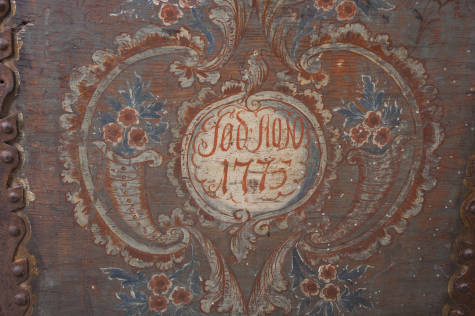
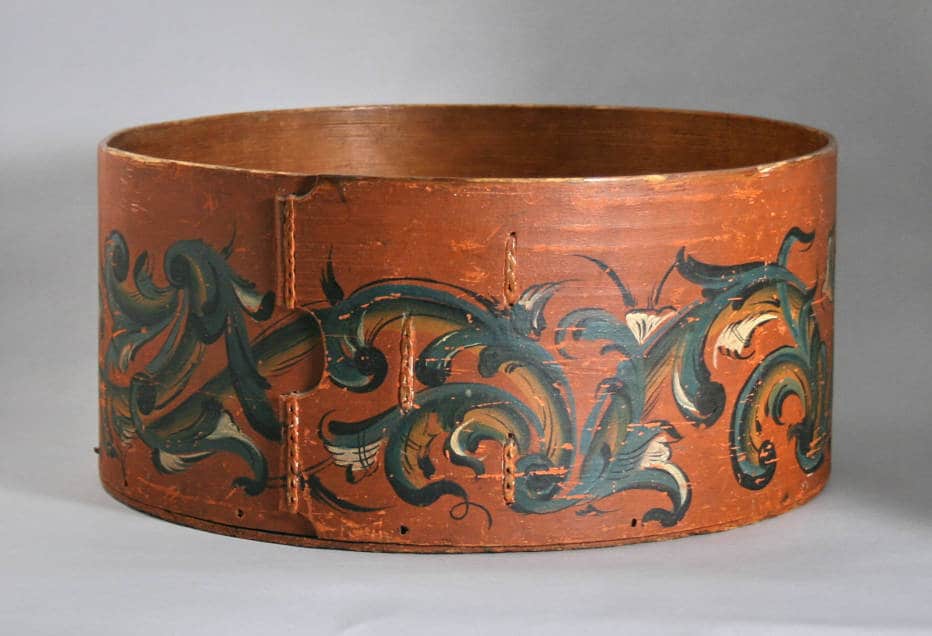
For the most part, the challenges of adapting to life in America meant that the tradition of rosemaling faded. But a revival of the art in the United States was launched by Per Lysne of Stoughton, Wisconsin beginning in the 1930s. Lysne was trained in rosemaling in Norway before immigrating to Stoughton in 1907. His artistic talent helped him get a job painting wagons in a factory, but when the Great Depression slowed business, he turned to his roots for support. His skilled and intricate designs soon popularized the tradition worldwide.
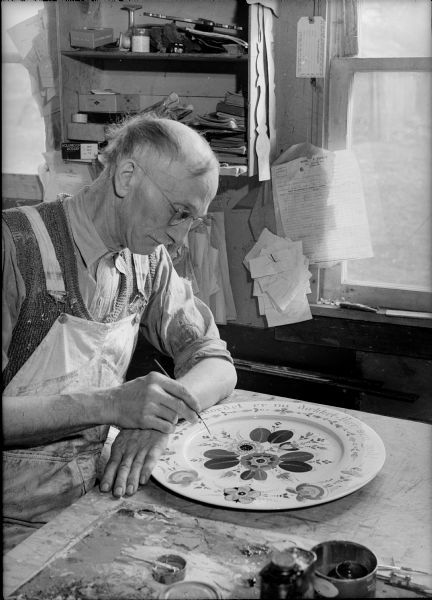
Lysne first gained recognition for his painted smorgasbord platters. Smorgasbord is a Swedish term referring to a large meal consisting of a variety of foodstuffs, both hot and cold, on the same surface (the Norwegian word for the same practice is Koldtbord).
One of Lysne’s earliest major commissions was several works for Ten Chimneys, the summer retreat of celebrated film and theater actors Alfred Lunt and Lynn Fontanne outside Genesee Depot, Wisconsin. A feature on Ten Chimneys published in Vogue in 1933 highlighted Lysne’s work, including one of his smorgasbord platters. The American public associated the art style with the sophistication of the Hollywood couple, and demand for Lysne’s creations went through the roof.
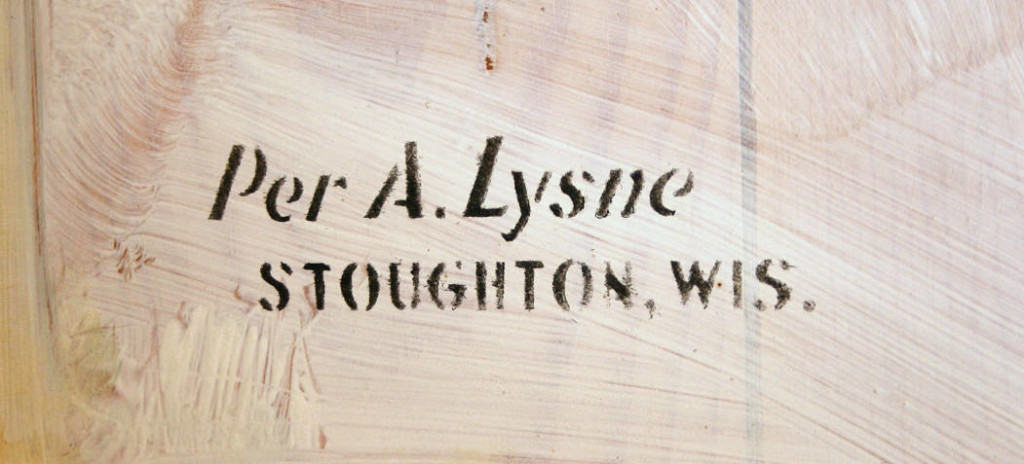
The rosemaling revival inspired many hopefuls to start their own painting businesses, while others took up the craft as a hobby. Artists painted common household items other than just dinnerware. As Lysne had shown, chairs, cabinets, boxes were fair game – if it was wooden, it could be painted.

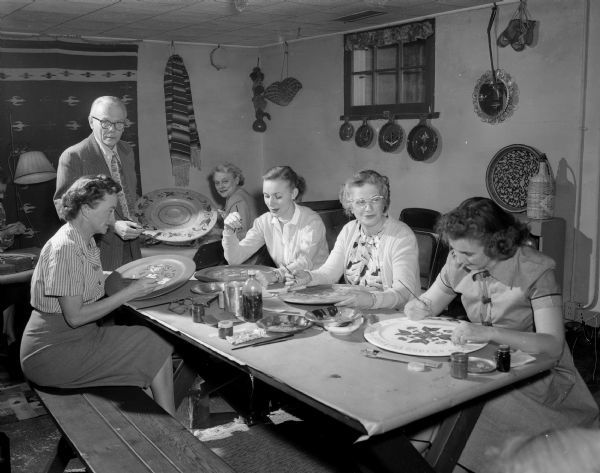
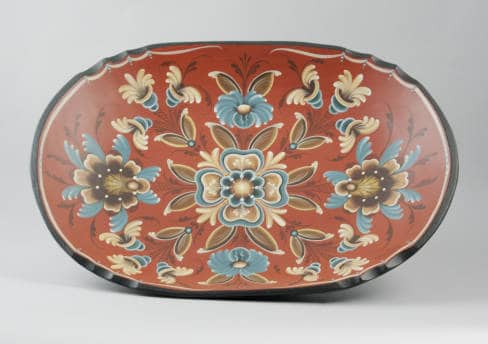
Rosemaling continues to be popular throughout Wisconsin and the Midwest. A second revival of the rosemaling trend occurred following the opening of the Vesterheim Norwegian-American museum in Decorah, Iowa, in the late 1960s. Vesterheim continues to offer rosemaling classes, exhibitions and competitions today. The Wisconsin State Rosemaling Association teaches and exhibits the craft in Stoughton, and the Stoughton Historical Society holds a large collection of work by Lysne and other Wisconsin rosemalers.
Sources
The images in this online exhibit come from the following digital collections. Click the links to browse the full collections.
- Skare Collection, McFarland Historical Society
- Wisconsin Decorative Arts Database
- Wisconsin Historical Images, Wisconsin Historical Society
Related resources
- Richard J. Fapso, Norwegians in Wisconsin (Wisconsin Historical Society Press, 2001)
- Julia Pferdehirt, They Came to Wisconsin (Wisconsin Historical Society Press, 2002)
- “Lois Mueller: Norwegian Rosemaling,” Wisconsin Folks, Wisconsin Arts Board
- Rosemaling in the Upper Midwest Collection, 1987-1995 (finding aid), Wisconsin Folk Museum

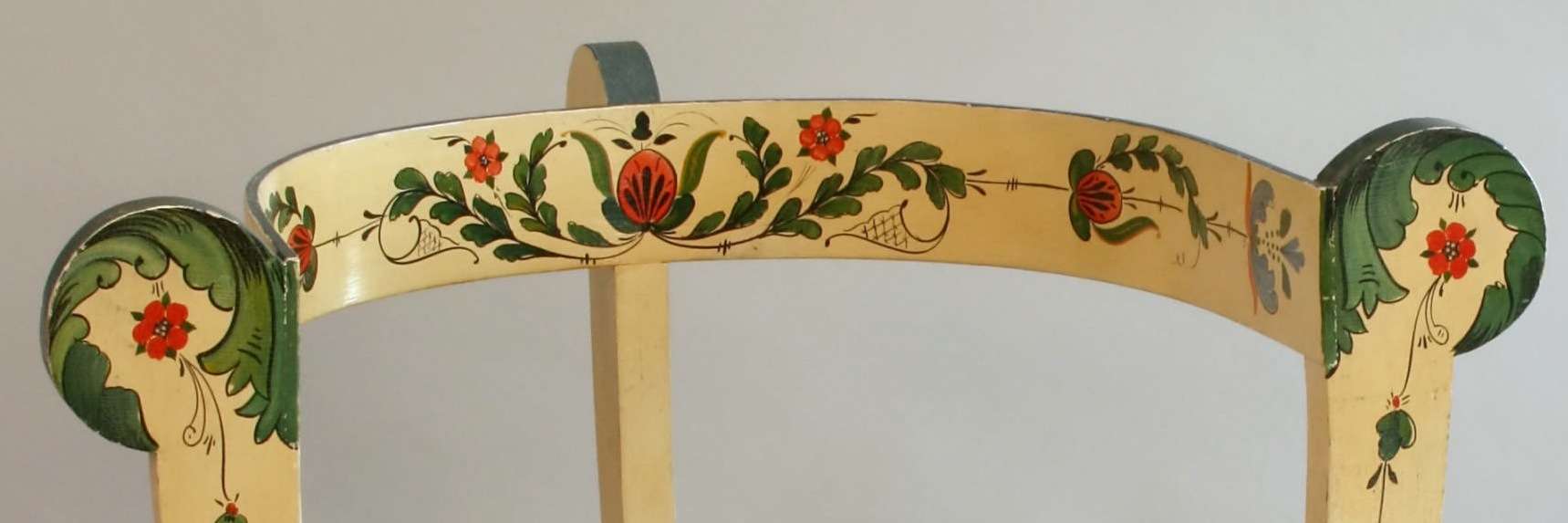
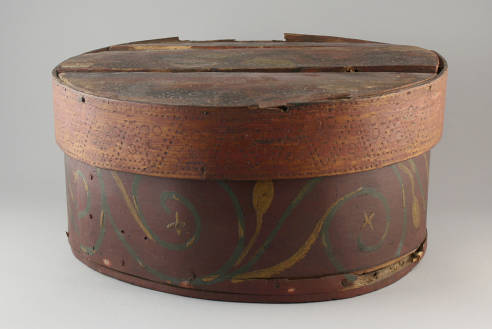
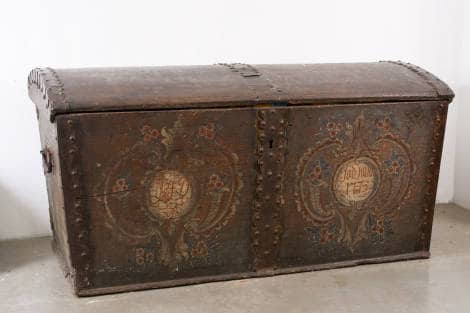
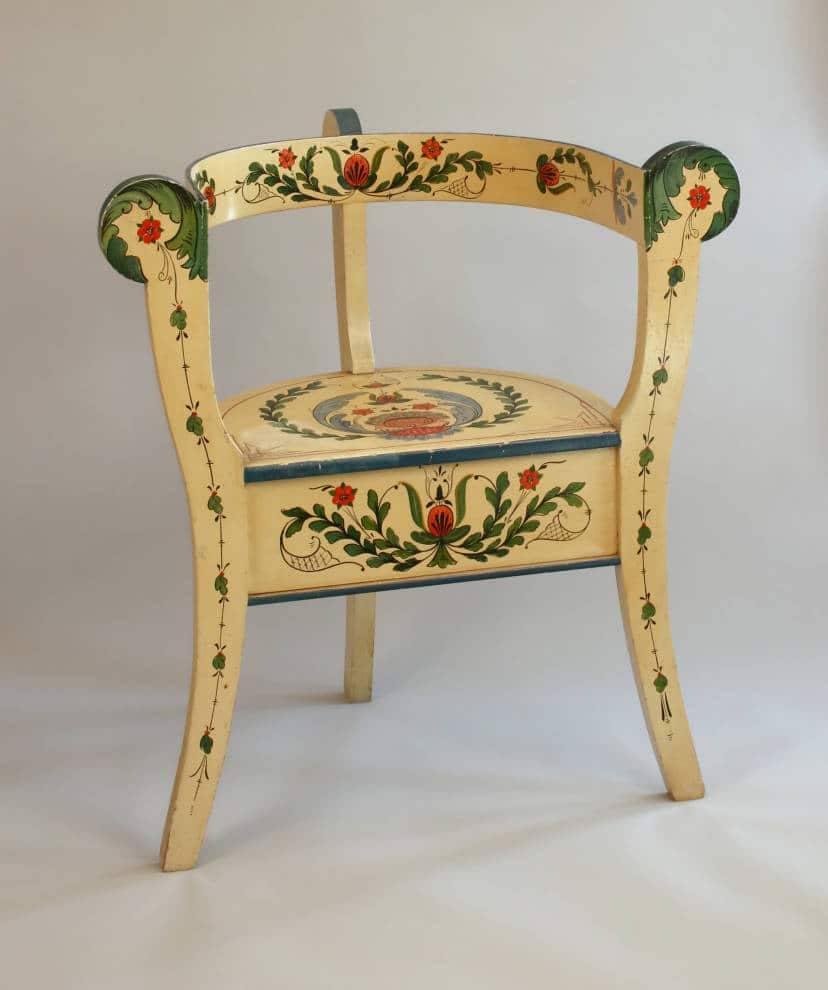


You must be logged in to post a comment.